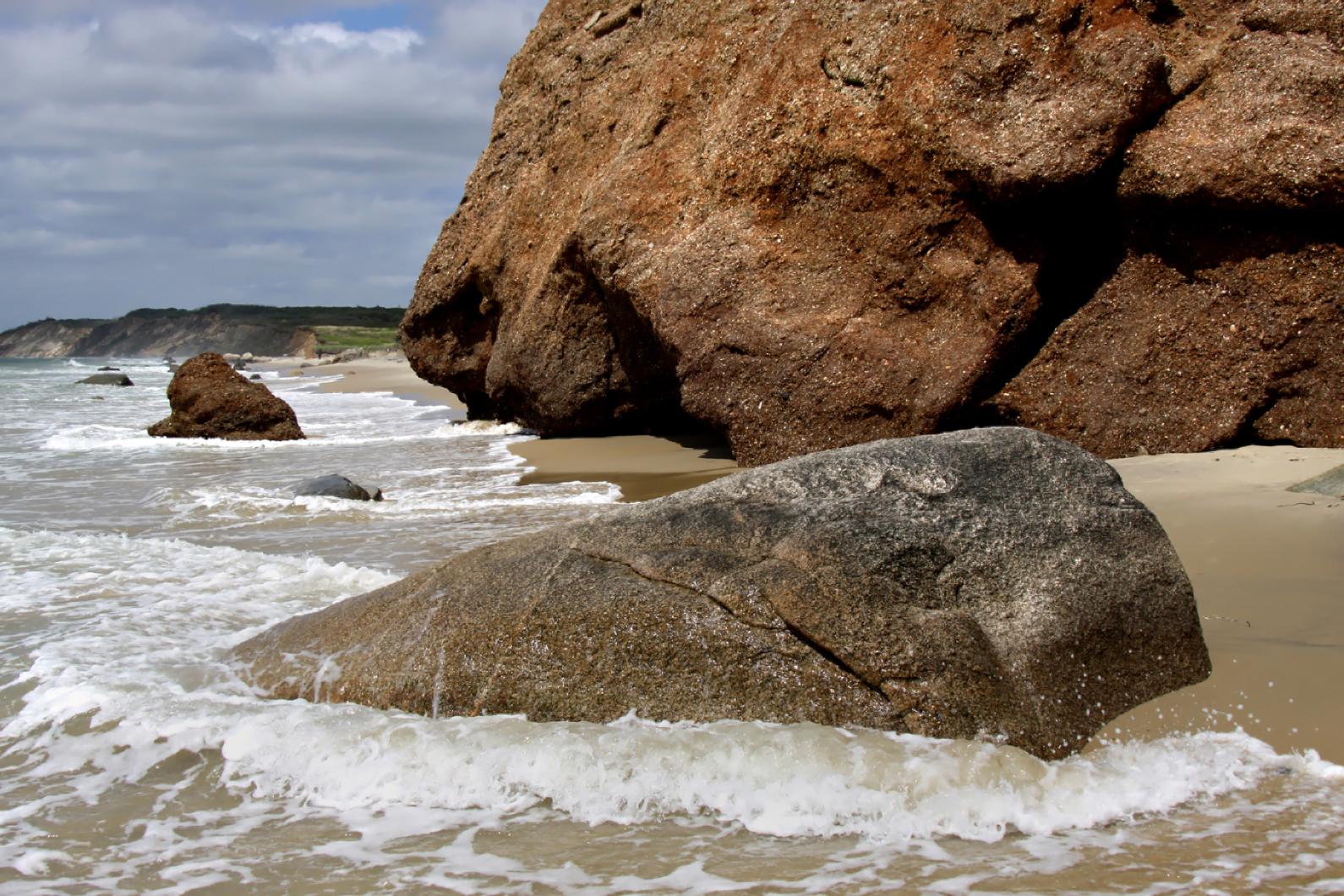For Martina Mastromonaco, Chilmark beach superintendent, the horseshoe she found recently on a dune at the west end of Lucy Vincent Beach is no lucky charm.
On the contrary, she thinks the ancient-looking piece of metal is a bearer of bad tidings. The game of throwing horseshoes at the beach has not been popular for many years, she reasons, so the fact that the ocean has uncovered this artifact now is a stark illustration of how fast her beach is disappearing.
Ms. Mastromonaco estimates that this winter alone took at least three feet from the dunes to the right of the beach walkway.
“This is horrible. They’re small dunes and if the ocean breaks over the dunes it will have a huge impact on the environment. The wetland will go on forever. . .” she said.
Furthermore, if the dunes disappear, the path and parking lot behind them which dip down from the top of the beach would soon fill with water.
At the end of May she saw less beach than at any time since becoming superintendent in 1995, but this dramatic state of affairs was less worrying for Ms. Mastromonaco than might be supposed.
She knows that Lucy Vincent is what ecologists call a dynamic beach and that short-term dramatic shifts tend to even out. Indeed, in recent days the shoreline has retreated significantly.
What Ms. Mastromonaco is more concerned with is the longer-term, steadier creep shoreward.
Douglas Cooper, a consultant geologist who, with his biologist wife Carla, runs Cooper Environmental Services, figures that on average the beach is receding at a rate of five to 10 feet per year.
“This year was roughly typical, maybe a little more exciting than usual,” he said, “but there’s no easy way to predict what will happen next year.”
During the colonial era beachgoers would have walked on sand which is now up to half a mile out to sea, Mr. Cooper pointed out.
He and his wife have found work since the mid-1990s from Chilmark residents who own homes near the cliffs and are concerned for the safety of their property.
“We look at old historical maps and land loss across the south shore and project the rate of loss. If there’s a tennis court 250 feet from the cliff, I project how long until the integrity of the tennis court is threatened,” he explained.
Chilmark building inspector Leonard Jason Jr. said several houses have been moved back from the cliff a little further to the west of Lucy Vincent at Whale Hill. And he knows that at least some of the handful of houses at Lucy Vincent were constructed on piers in the knowledge that they too some day will need to retreat.
“Everyone knows the south shore is eroding, it’s no secret,” he said.
Mr. Cooper estimates it like this:
“If your house is 500 feet from the cliff, then you have about 50 years,” he said. “A couple of houses are getting close; in five to 10 years they should be considering the threat.”
Winter storms batter Lucy Vincent and each spring Ms. Mastromonaco and her team come in and pick up the pieces.
This year, for example, all the snow fencing had to be replaced. The fencing is doubly useful — to stop beachgoers from walking on the fragile dunes and to build up a sand barrier at its base.
Down by the volleyball court sand had washed out to sea, exposing the wet clay beneath. Ms. Mastromonaco is hoping that a sand bank she has spotted a little way out will be washed ashore and replenish the area.
And last year a cliff a few hundred yards to the east had begun to split the beach in two at every high tide. Last summer Ms. Mastromonaco instituted an alternate walkway leading beachgoers up a path behind the cliff.
The cliff has eroded further at the toe, creating a potentially enticing cave for youngsters and a highly hazardous feature of the beach.
“It’s horrible. I couldn’t even put the sign up in front of the cliff,” she said. Instead she staked a notice some way up the beach warning that the cliff is extremely dangerous.
Mr. Cooper explains that the cliff’s composite nature makes it vulnerable to sudden erosion.
“The cliff is a glacial feature deposit which doesn’t bond particularly well,” he said. “Sand will erode at a pretty constant rate; this combination of clay and silt holds for longer but then slopes off more dramatically.”
Ms. Mastromonaco has only around $5,000 in her facility maintenance budget to cover the three town beaches of Lucy Vincent, Squibnocket and Menemsha. Still she hopes to organize repair work on the dunes in the fall. Meanwhile she is simply keeping tabs on her crumbling jurisdiction, taking photographs of the shoreline and cliff every couple of days.








Comments (2)
Comments
Comment policy »